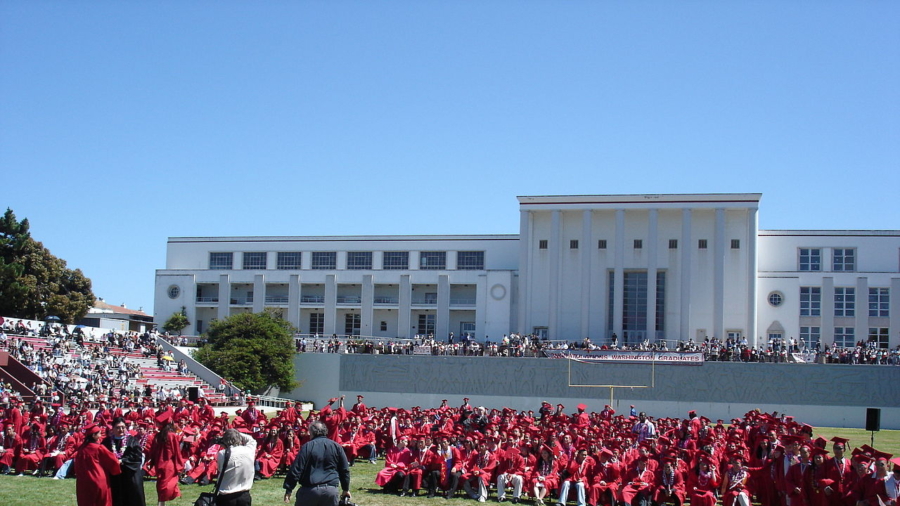The San Francisco Board of Education voted unanimously to paint over 1,600 square feet of murals depicting the life of George Washington on the walls of San Francisco George Washington High School after pressure by civil rights groups, KQED reported.
The murals were created by Russian-American artist and Stanford University art professor Victor Arnautoff at the opening of the school in 1936 as part of the New Deal’s Works Progress Administration program during the Great Depression and were a portrayal of different phases in the life of George Washington.
Two scenes depicted are of particular controversy: one scene of Washington overseeing his slaves at work on his estate at Mount Vernon; the other, titled “Westward Vision,” showing Washington pointing westward, directing colonists to push the border further west and walking past the corpse of a deceased Native American.
In a statement in February, the school-board committee decided that the artwork “glorifies slavery, genocide, colonization, manifest destiny, white supremacy, oppression, etc.” and that it “traumatizes students.”
But a number of art historians and school alumni argue that it is just the opposite of offensive.
Fergus M. Bordewich noted in an op-ed for the Wall Street Journal that the artist, Arnautoff, was a communist and he was in fact very critical of America’s colonial history.
Arnautoff even remigrated, after his wife’s death, to the Soviet Union, where he finished his career as a fine arts professor at the University of Leningrad.
“My fear,” says Gray A. Brechin, a scholar at the Living New Deal documentary project and archive, “is that if they are successful at destroying the murals, then no art that anyone finds offensive will be safe [sic] Are we to have a Museum of Suppressed Art to contain this pogrom of images?” the Journal reported.
Furthermore, as Robert Cherny, Professor Emeritus at San Francisco State University, debates in his biography, “Victor Arnautoff, and the Politics of art,” Arnautoff was presenting a counter-narrative to the widely accepted version of America’s colonial past, according to the website Public Art and Architecture.
Especially in these two debated scenes, Cherny points out, that the Native Americans and African slaves are playing the lead role in the center of the piece and are portrayed in an upright and dignified manner, with Washington and his assistants as the extras positioned at the sides.
But while the intent and the motives of Arnautoff were not subject to debate, many—predominantly Native Americans—felt the frescos were humiliating and offensive.
Paloma Flores, program coordinator for the school district’s Indian Education Program, and opponent of the mural said, “It’s not a matter of offense, it’s a matter of the right to learn without a hostile environment.” She added, “Intent does not negate lived experience,” KQED reported.
On June 25, the board, laying aside district staff’s recommendation to cover-up the mural with fabric or paneling, decided by eight votes in favor and one vote against that not only the two offending panels should be removed, but the entire series—all thirteen panels.
The operation is estimated to cost about $600,000 and take at least one year to complete. The removal will start earliest this fall. First, it needs to be subjected to an environmental review, giving opponents of the move time to raise an appeal.
Lope Yap Jr., vice president of the high school’s alumni association, said he will seek whatever legal means possible to block the decision of the school board to erase the pictures, adding that there are “several grounds” for litigation, according to KQED.
Furthermore, ABC reporter Lyanne Melendez pointed out, that the California Arts Preservation Act forbids the destruction of an artist’s work within 50 years of his death. Arnautoff died in 1979, meaning it would be another 10 years at least before the artwork could legally be destroyed.

